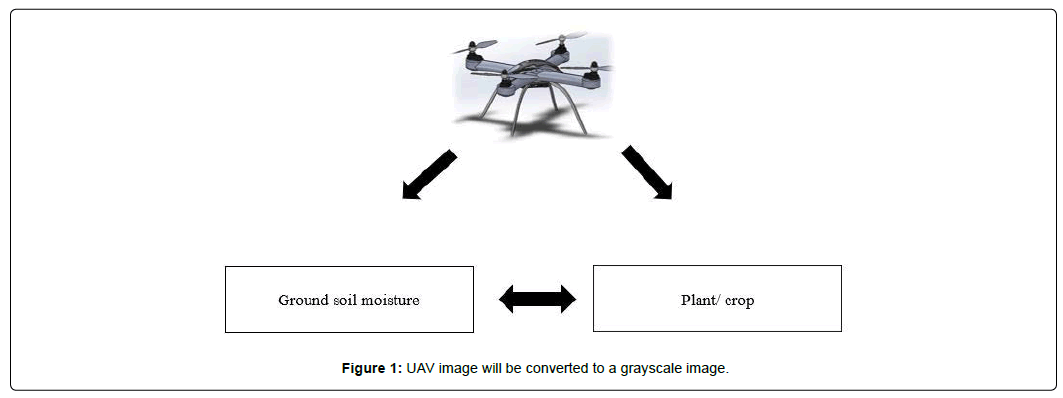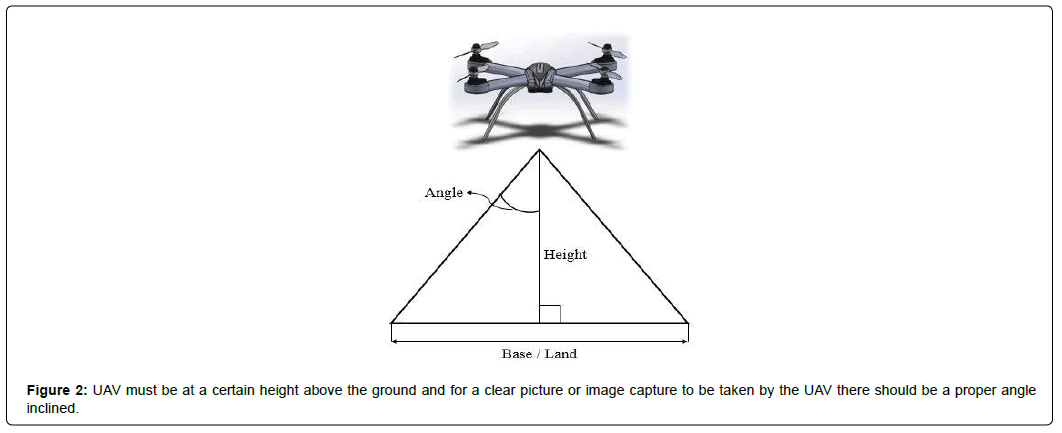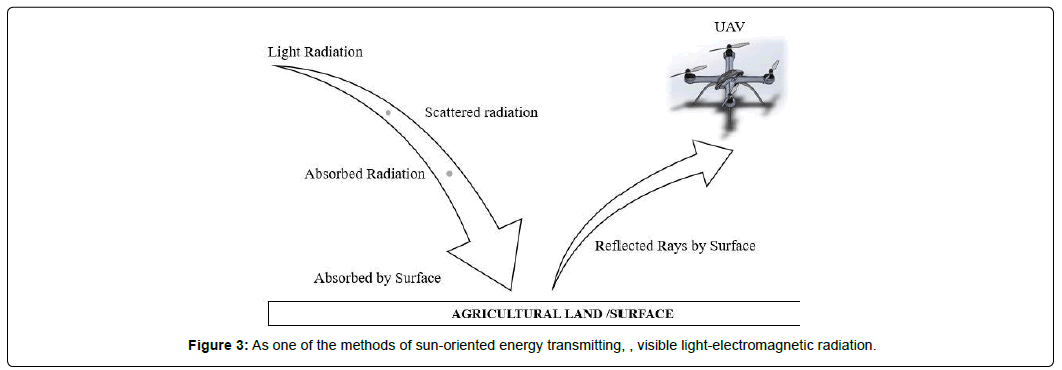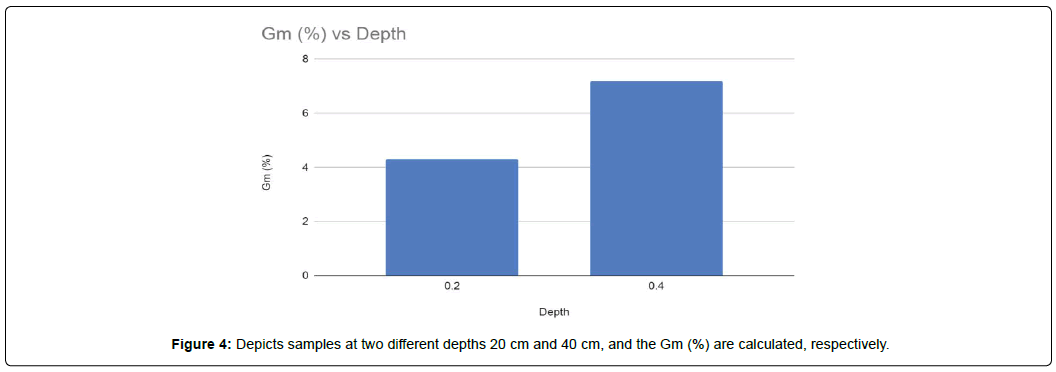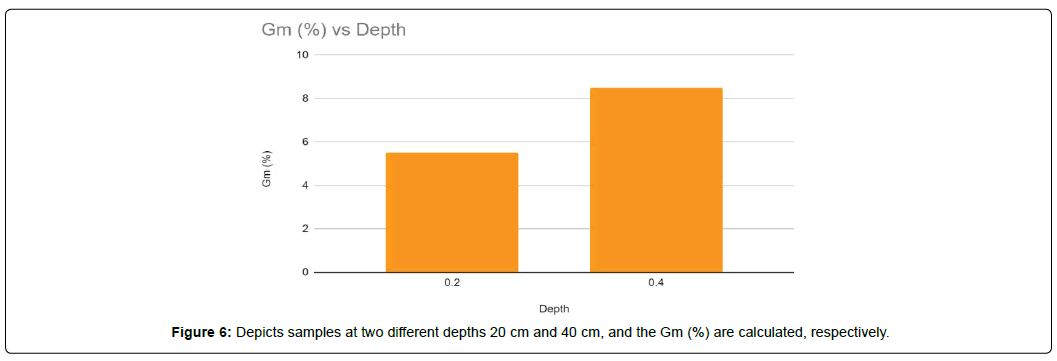Research Article, J Comput Eng Inf Technol Vol: 10 Issue: 7
Mechatronics Application in Determination of Soil Moisture Content in Farming
Gaurang Salunke*, Aditya Hasabnis
Department of Computer Science, Vellore Institute of Technology, Vellore, 632014, India
*Corresponding Author: Gaurang Salunke Department of Computer Science, Vellore Institute of Technology, Vellore, 632014, India Tel: +91-9595778157 E-mail: gaurangsalunke99@gmail.com
Received: May 15, 2021 Accepted: July 12, 2021 Published: July 10, 2021
Citation: Salunke G, Hasabnis A (2021) Mechatronics Application in Determination of Soil Moisture Content in Farming. J Comput Eng Inf Technol 10:7.
Abstract
Mechatronics is playing a vital role in agriculture production. Image processing has a wide range of applications in the field of agriculture. Precision Agriculture (PA), site-specific soil monitoring using UAV is our goal. Farmers will be able to monitor the soil moisture content and the health of the crop in their single device itself. The rapidly increasing demand for food and scarcity of farmers/laborers can be reimbursed by this technology. We have not only implemented Image Processing with help of UAV but also, we are aiming to calculate the gravimetric moisture at different depths of the ground for diverse soil types.
Keywords: Precision agriculture, Mechatronics, Soil moisture, Image processing, Gravimetric moisture
Introduction
Agriculture is an important field in our lives as it meets up our basic necessity of food and in this advancing world; we need to think about automation in agriculture. The implementation and development in machine learning, mechatronics, computer vision have opened many doors in advancement and gave us the way to remotely sense technologies which are for plants, waste management, weed, diseases, and pest identification. In today’s world, everyone is concerned about the higher yield of the crops in different seasons. The higher the use of technology or mechatronics in the field, the higher will be the yield as these technologies can keep the track of all the growing plants in the farm field, and the user or the farmer will have a clear idea if the plant is infested with pests or not or do we have to use fertilizers, it may tell the moisture content in the soil and many more. So, there is a need for these technologies to come into action in particular we are talking about mechatronics.
Mechatronics technology has become necessary for developing machines to support human society. Some examples include assistant devices and robots in various fields such as agriculture, construction, industries, medical, etc. Current and future mechatronics area unit developed supported the technological trends needed to higher and create an easier human living and sustain the setting. Mechatronic systems facilitate offer a competitive advantage in a very harsh industrial setup.
The scarcity of workers in the field of agriculture and the growing world population can be compensated by agricultural Robots. In a single platform, we can integrate Image Processing, Machine Vision, and Mechatronics which will benefit us in terms of precision, economics, environment protection, time-saving, and reduced human drudgery and this becomes the most favorable autonomous agricultural solutions. Also, another method is to calculate the Gravimetric moisture by collecting different soil samples at different depth levels and determining the soil moisture percentage. This is also an especially useful technique for farmers.
Precision Agriculture (PA) was first introduced in the 1980s. PA allows Farmers to monitor the soil and crop condition on the field. In this system, we use the mechatronic system to carry out different processes and sub-processes and control all the operations. The application of Precision Agriculture technology in Farming leads to low input materials and high efficiency in agriculture. PA increases productivity and prevents soil degradation. PA is useful in countries where there is the insecurity of food. We can adopt PA techniques in less developed areas with proper planning of technology and practices.
Literature Review
Irrigation is an especially crucial factor in farming. Application of microcontrollers such as Arduino UNO and soil moisture sensor can be programmed and used to determine the amount of moisture present in the soil. Thus, we can determine the change in the moisture level and report directly via signals to farmers in their devices. This device will be beneficial to augment crop growth, lessen costs, and curtailing water wastage and labor [1].
According to Precision Agriculture (PA) has many advantages in the field of agriculture and is mainly concerned about plant production [2]. Agriculture is slowly shifting towards IoT-based mechatronic systems. We can see that agriculture is evolved from a sole product toward Smart and device-connected products. If we combine Global Positioning System (GPS) and Remote Sensing (RS) we can accurately map and model the agricultural land. With help of this system, we can obtain real-time moisture presence and nutrition content in the soil.
As some of the techniques used for the detection of pests and diseases in the agricultural field are based on Image Processing and Machine Vision techniques it is important to have a proper collection of datasets in the form of photographs of samples so that the device may operate based on the conditions of the sample [3]. Accuracy is gained when there is consideration of several types of datasets so we can train the AI algorithm accordingly. These man-made intelligence calculations and advancements can be coordinated with versatile equipment to give a stage that can cost-adequately identify and geolocate irritations and sicknesses and create a remedy map (viable with accuracy hardware) for variable rate utilization of agrochemicals. Most researchers are trying to make agricultural application devices which will be cost-effective, accessible and it meets the requirement of the user. Some device’s work will be on finding the best quality fruit or vegetable after extracting features like edge detection, masking, shadow removal, color-based and shape-based sorting which are the techniques used for image processing.
As researched in [4] they have taken into consideration three unalike parts and have tried to amalgamate things to make a device for the users which can be user-friendly, can be automated easily, better in performance, and at the same time is cost-effective. The three unalike parts provided in this research are beneficial to the farmer which are – First, during scorching heat in summers, there are frequent power cut-offs so the solar tracker can pave a way to provide electricity in farms so that pumps can work. Secondly, an Adequate amount of water will be stored in the storage system all day with the help of an automated pump controller so that whenever there is less moisture in the soil it can be watered. Third, the programmed water system framework assists with keeping a standard ideal degree of water into the dirt all together for harvests to develop appropriately in this manner diminishing the odds of under or over water levels which may destroy the crops.
Researchers have proposed an idea of the SCADA (Supervisory Control Data Acquisition) system which adds an operator to the selfregulating irrigation system [5]. The essential parameters used in this system are the light detection sensor, soil detection sensor, and water level sensor. This research is very crucial for the systems that deal with soil moisture monitoring and controlling in the irrigation field. The SCADA system help administrator to keep track of irrigation systems. As stated in the paper, this project can be expanded to oil and gas detecting systems. Based on the result the system’s performance is quite authentic and accurate.
Mechatronics in agriculture is becoming increasingly intellectual and intelligent [6]. Many sensors will come into play like GPS, ultrasonic and many more sensors will be implanted on tractors and machines (self-propelled). In the future there will be more practice on precision farming, Inside Exactness cultivating applications robotized information obtaining will have the most noteworthy need. It will be trailed by site explicit harvest creation and fleet management. As a last advancement self-sufficiently, guided vehicles will be brought into farming. Information gathering, refining, consolidation in farm administration, and data supply to/from commerce and substantiation. The ideal likelihood for traceability can be achieved from communication (standardized) by ISO and within the cell phone agricultural apparatus GPS. Today many parameters are sensed by various sensors, many are in high demand for quality detection, the ingredients, and extra boundaries characterized by the customers.
As per soil conductivity is an important property of soil for optimum plant growth. They built a setup to measure soil electrical conductivity using the four-terminal method [7]. They built a device for the above same purpose. The electrodes are disc-shaped to maintain continuous measurement of soil condition. Including GPS, they also included a Data acquisition system connected to a single device. This device will be able to plot the soil conductivity chart in different regions. This will give a terrific opportunity to engineers to plan and obtain augmented quality and quantity yields.
They worked on the image extraction technique for weed administration and monitoring soil condition in Vineyards, firstly they converted RGB image to a grayscale image using software MATLAB [8]. The in-built function of MATLAB taken into consideration they found out that in the grayscale image the white portion detected is of weed and all the Gray or black pixels accounted for the soil. Thus, they found out that the pixel whose RGB value is 0 is the weed they wanted to administer. After this, they decide to spray herbicides on it. Now they wanted to make a monitoring device like this to be implanted on a vehicle. Automation included transversing of the vehicle through the rows of the vineyard and wherever the weed is detected, the device would spray herbicides on that weed, and at the same time, they would be able to monitor the soil moisture, for this purpose they used a rotary encoder and soil moisture sensor. For powering up the pump to spray herbicides a relay was used in the automation. All commands were communicated to the Arduino board through MATLAB’s special package interface. This device can be implanted on a vehicle and the results can be found out.
Facility Agricultural System is the comprehension of different disciplines [9]. This system is based on Internet of Things technology which integrates a variety of technologies such as sensors, automation in agriculture, data acquisition, and communications and computer. This system is used for numerous applications such as determining air temperature and humidity determination, soil temperature and moisture content, soil heavy metal detection, Light detection, and fertilization techniques. It is predicted that Facility Agriculture will have a rapid growth in agricultural machinery, various sensors, and information.
Image processing technologies are mostly used today, they have many applications in branches of agriculture, related to technology used in Precision Farming [10]. There are many computer visionbased processes developed for percentage detection of weed, crop quality, and soil moisture present in an image showing a particular region of the developed crop field. Soil moisture measurement is based on Time-Domain Reflectometry (TDR) or thermogravimetric methods. On other hand, indirect methods are used to obtain integrated reckon of soil moisture content over larger regions. These are based on the association between propagation characteristics of low-frequency radio waves and external soil moisture. Images were obtained by using a drone camera, which was then processed in MATLAB. The maps formed using this technology are plotted using MATLAB software and analyzed further to check the soil quality and humidity present in the soil.
Findings
We have taken image processing into account and this can be implemented through Figure 1 in such a way that there will be a drone for taking aerial images of the farm field at a certain height, then the image’s feature can be extracted. The UAV image will be converted to a grayscale image, the average pixel brightness value of the UAV visible image can be used as a factor to estimate the 0-10cm soil moisture.
Different linear models must be tested for diverse types of soil, in order to find out the most accurate we have considered bands of color spaces RGB, HSV, and digital numbers of the panchromatic image as independent variables. The outcomes show that to gauge the dampness of soils broke down as a component of the variety in the spectral response, the qualities of the soil should be recently investigated so the most agreeable model is chosen. There is yet the requirement for reciprocal investigations with distinctive soil classes to comprehend the connection between soil dampness and the unearthly reaction of the soil. In Figure 2 we are trying to show that the UAV must be at a certain height above the ground and for a clear picture or image capture to be taken by the UAV there should be a proper angle inclined. Based on testing of datasets the height should be about 1.4 meters and the angle must be 47 degrees and the area covered in single image capture is about 3 meters.
Dampness assurance through advanced pictures is a nondestructive strategy that should be improved for loco assurance without the requirement for gathering tests. One impediment of the strategy is that it decides just the dampness on the surface of the sample. As one of the methods of sun-oriented energy transmitting, visible light-electromagnetic radiation is discharged from the sun and arrives at the earth’s surface through different atmospheric segments (Figure 3). In the transmitting cycle, some portion of the visible light-electromagnetic radiation was assimilated and dispersed by the air, part is consumed by the surface, and the rest is reflected by the surface. In this investigation, because of the nearby separation from the surface to the UAV, the impacts of the environment on this course were insignificant, however, the impacts of the climate on the sun-surface course exist.
The current investigation shows that it is feasible to appraise soil dampness dependent on the spectral response of tests, given that a few precautionary measures are taken, for example, the adjustment of brightening and white balance. It ought to be called attention to that the electromagnetic energy reflected by the soil surface is a property of the sensor of the camera and, subsequently, without the legitimate rectifications, the outcomes will differ from camera to camera.
For calculating the gravimetric moisture, we implemented the formula:

Where:
Gm (%) - gravimetric moisture, %;
Wds - weight of dry sample, g:
Wws - weight of wet sample, g; and, Wc - weight of the container used, g.
Results
The following Table 1 shown above is about the calculation of the Gravimetric moisture (in %) in the soil at certain depths i.e., at 20 cm and 40 cm from the surface of the soil. Diverse types of samples were considered like 1-A, 2-A, 3-A, etc, and based upon the weights of the dry sample, wet sample, and weight of the container (in grams) the calculations were done. The table shows the interpretation of our findings.
| Sample no. | Depth | Wds - weight of dry sample | Wws - weight of wet sample | Wc - weight of the container used (grams) | Gm (%) |
|---|---|---|---|---|---|
| (m) | (grams) | (grams) | |||
| 1-A | 0.2 | 95.27 | 92.36 | 25 | 4.3 |
| 1-B | 0.4 | 137.67 | 130.11 | 25 | 7.2 |
| 2-A | 0.2 | 159.12 | 152.34 | 25 | 5.3 |
| 2-B | 0.4 | 144.02 | 139.24 | 25 | 4.1 |
| 3-A | 0.2 | 178.77 | 170.67 | 25 | 5.5 |
| 3-B | 0.4 | 155.42 | 145.14 | 25 | 8.5 |
Table 1: The calculation of the Gravimetric moisture (in %) in the soil at certain depths i.e., at 20 cm and 40 cm from the surface of the soil.
Figures 4-6 depicts samples at two different depths 20 cm and 40 cm, and the Gm (%) are calculated, respectively. This concludes that the higher the Gm (%) the higher are the chances that the crop can grow and the yield will be good in that field. Soil moisture content is important to measure because it serves as a solvent and carrier of food nutrients for plant growth. Rather than looking into the deficiency of other food nutrient, it is important to determine the amount of water available in the soil so the yield of a crop is more. Also, soil moisture regulates soil temperature. Metabolic activities of microorganisms are fulfilled with this soil moisture. For meeting the requirement of photosynthesis soil moisture is essential.
Conclusion
So, we have found out the reasons that why it is important to govern the soil moisture, through this paper we proposed two methods one of which was the image processing done by the UAV and the other to determine gravimetric moisture of the soil. Further examination and implementation of Mechatronics in Agriculture is still prevailing and to get reliable results in agriculture there should be more use of mechatronics.
References
- Azeta J, Bolu CA, Alele F, Daranijo EO, Onyeubani P, et al. (2019) Application of Mechatronics in Agriculture: A review. J Physics: Conference Series, 1378.
- Erdélyi V, Jánosi L (2017) Mechatronics in Agriculture. Scientific Bulletin Series C: Fascicle Mechanics, Tribology, Machine Manufacturing Technology, 31(Xxxi), 31–35.
- Sankaranarayanan S (2020) Applications of Artificial Intelligence for Smart Agriculture. 277–288.
- Mahzabin A, Taziz CA, Amina M H, Gloria M, Zishan MSR (2016) Design and Implementation of an Automatic Irrigation System. Iarjset 3: 159–162.
- Abdelkerim AI, Eusuf MMRS, Salami MJE, Aibinu A, Eusuf MA (2013) Development of solar powered irrigation system. IOP Conference Series: Materials Sci Eng, 53.
- Auernhammer H. (2002). The role of mechatronics in crop product traceability. Agricultural Engineering International: The CIGR Journal of Scientific Research and Development, IV, 1–21.
- Brasov I, Olteanu F (2007) “Trends in the Development of Machinery and Associated Technology” AGRITRONICS: AIDS FROM MECHATRONICS Ciprian Olteanu „ TRANSILVANIA” University of Brasov, 651–654.
- Kolhalkar NR, Krishnan VL (2020) Mechatronics System Design for Weed Management and Soil Condition Monitoring Within the Rows of Vineyards. Inter J Innovative Tech and Exploring Eng, 9: 3088–3094.
- Zhou L, Song L, Xie C, Zhang J (2013) Applications of Internet of Things in the facility agriculture. IFIP Adv in Inform and Commun Tech, 392: 297–303.
- Gheorghe C, Deac TA, Filip N (2019) Image processing techniques used in soil moisture analysis. INMATEH - Agric Engin, 58: 147–154.
 Spanish
Spanish  Chinese
Chinese  Russian
Russian  German
German  French
French  Japanese
Japanese  Portuguese
Portuguese  Hindi
Hindi 